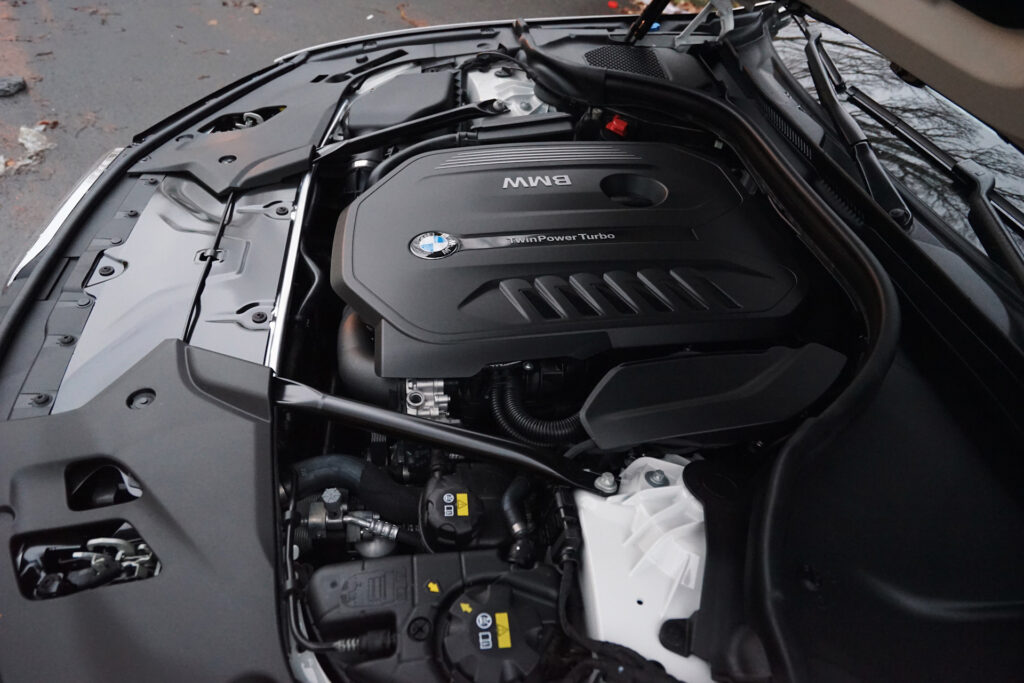The Enduring Legacy: A Deep Dive Into The 2025 BMW B58 Engine

The Enduring Legacy: A Deep Dive into the 2025 BMW B58 Engine
The BMW B58 engine, a 3.0-liter inline-six, has become a modern automotive legend. Introduced in 2015, it quickly garnered acclaim for its power, efficiency, and refinement, becoming a staple in BMW’s lineup. As we stand on the cusp of 2025, the B58 continues to evolve, showcasing BMW’s commitment to continuous improvement and performance. This article will delve into the B58’s enduring legacy, exploring its evolution, technical intricacies, and its projected role in the future of BMW’s powertrains.
From Humble Beginnings to Global Acclaim:
The B58’s roots lie in the N55 engine, another iconic inline-six that powered BMWs from 2009 to 2016. However, the B58 was a significant leap forward. It incorporated a redesigned cylinder head, a single twin-scroll turbocharger, and a revised intake manifold, resulting in improved power delivery, reduced turbo lag, and enhanced efficiency.
The B58’s initial output was a respectable 300 horsepower and 332 lb-ft of torque. But BMW engineers were just getting started. Over the years, the B58 has been continuously refined, with various iterations boasting power outputs ranging from 335 horsepower in the M340i to a staggering 503 horsepower in the M4 Competition.
Technical Prowess: A Deeper Look:
The B58’s success stems from its meticulous engineering. Here’s a breakdown of its key features:
- Modular Design: The B58 shares many components with other BMW engines, making production and maintenance more cost-effective.
- Inline-Six Configuration: This classic layout offers inherent balance and smoothness, contributing to the B58’s renowned refinement.
- Single Twin-Scroll Turbocharger: This design reduces turbo lag and provides a more responsive power delivery compared to traditional twin-turbo setups.
- Direct Injection: This system delivers fuel directly into the combustion chamber, improving fuel efficiency and reducing emissions.
- Valvetronic Variable Valve Lift: This technology optimizes intake valve lift for improved fuel efficiency and power delivery.
- Double VANOS Variable Valve Timing: This system adjusts the timing of both intake and exhaust valves, optimizing performance and fuel economy.
- Aluminum Block and Head: This lightweight construction contributes to the B58’s impressive power-to-weight ratio.
The B58 in 2025 and Beyond:
As we approach 2025, the B58 continues to evolve. BMW is actively exploring ways to further enhance its performance and efficiency. Here are some potential developments:
- Mild Hybrid Technology: The integration of a 48-volt mild hybrid system could provide a boost in power and fuel economy, further reducing emissions.
- Electric Turbocharger: Utilizing an electric motor to assist the turbocharger can significantly reduce turbo lag and improve responsiveness.
- Higher Compression Ratios: This could lead to improved efficiency and power output, potentially exceeding the 500 horsepower mark in future iterations.
- Biofuel Compatibility: As the automotive industry transitions towards sustainable fuels, the B58 could be adapted to run on biofuels, further reducing carbon emissions.
The B58’s Enduring Legacy:
The B58 engine has redefined expectations for performance and efficiency in the automotive industry. Its combination of power, refinement, and versatility has made it a favorite among enthusiasts and critics alike.
Its enduring legacy is solidified by its widespread use in various BMW models, from the 3 Series and 4 Series to the X3 and X4. This testament to its reliability and performance has also led to its adoption in other brands, such as Toyota’s Supra and the upcoming Lexus LC 500.
Looking Ahead:
While the future of internal combustion engines is uncertain, the B58 engine stands as a testament to the potential of innovation and refinement. Its continuous evolution, coupled with BMW’s commitment to sustainability, suggests that the B58 will continue to play a significant role in the automaker’s powertrain strategy for years to come.
As the automotive landscape shifts towards electrification, the B58 could serve as a bridge, offering a balance between performance and efficiency while paving the way for future hybrid and electric powertrains. The B58’s legacy will likely be defined by its ability to adapt and evolve, ensuring its place in the annals of automotive history as a true engineering marvel.
Conclusion:
The BMW B58 engine is more than just a powerplant; it’s a symbol of BMW’s commitment to performance and innovation. From its humble beginnings to its continuous evolution, the B58 has consistently exceeded expectations, setting a new standard for inline-six engines. As we look towards the future, the B58’s legacy will undoubtedly continue to inspire and shape the automotive landscape, leaving a lasting impact on the world of performance driving.







